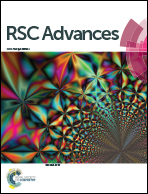Oleic-acid-assisted carbon coating on Sn nanoparticles for Li ion battery electrodes with long-term cycling stability†
Abstract
We report the one-pot synthesis of high-performance Sn@C nanocomposite anode materials obtained by uniform carbon coating onto Sn nanoparticles induced by electrical Sn-wire explosion in oleic acid liquid media at room temperature. This Sn@C nanocomposite exhibits highly reversible Li-storage performance with a specific capacity of ∼730 mA h g−1, even after 200 cycles.


 Please wait while we load your content...
Please wait while we load your content...